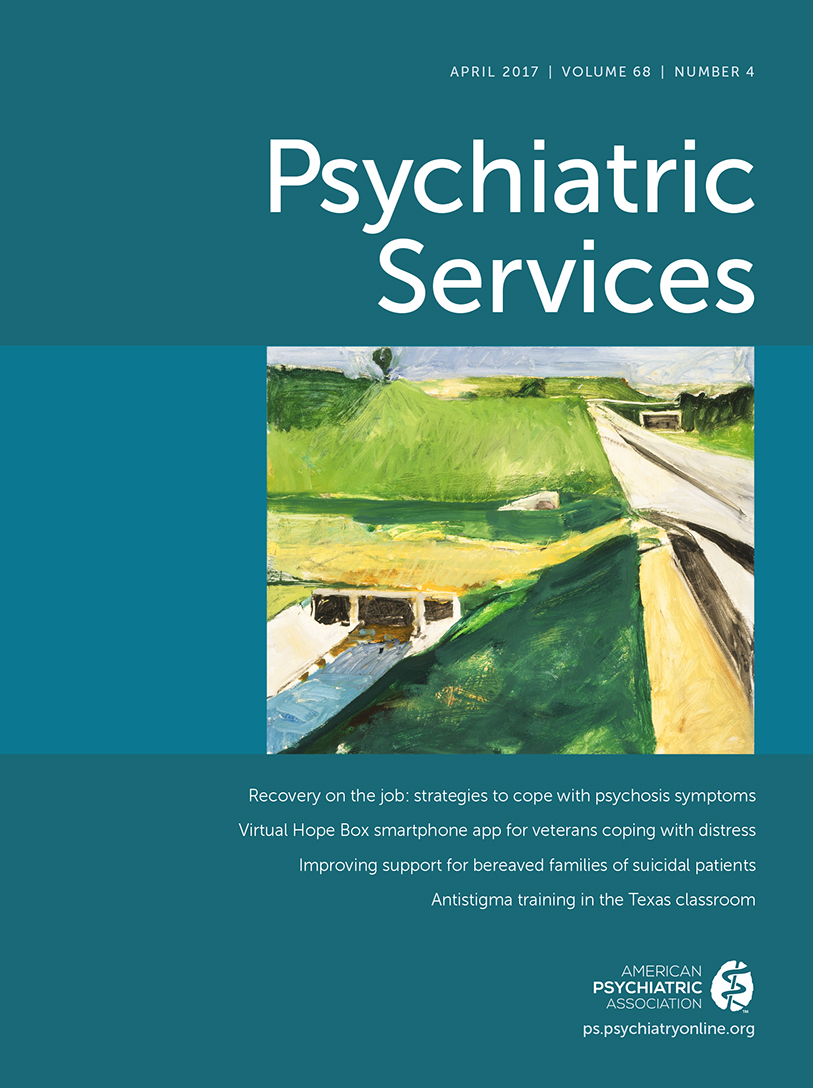Prescriptions Filled Following an Opioid-Related Hospitalization
TO THE EDITOR: In a recent study titled “Prescriptions Filled Following an Opioid-Related Hospitalization,” Naeger and colleagues (1) analyzed prescription records from 36,719 inpatient hospitalizations related to opioid misuse (defined as opioid abuse, dependence, or overdose) to elucidate gaps in treatment delivery postdischarge. The authors found that in the 30 days after discharge, only 16.7% of patients received any Food and Drug Administration (FDA)–approved opioid use disorder (OUD) medication (methadone, buprenorphine, or naltrexone). In addition, a substantial percentage of patients received prescriptions for medications that increase overdose risk for individuals with OUD, such as benzodiazepines (13.9%) and opioid pain medications (22.4%). These findings highlight that most patients hospitalized for opioid-related conditions do not receive timely FDA-approved pharmacological treatment for OUD postdischarge. As noted by the authors, increased efforts are needed to ensure that patients hospitalized for opioid-related illnesses receive recommended treatment.
Opioid misuse and OUD are a widespread public health crisis currently at epidemic levels, affecting over two million Americans in 2014 (2). Since 1999, overdose deaths related to prescription opioids have quadrupled in the United States, with over 183,000 total deaths attributed to prescription opioids from 1999 to 2015 (2,3). The Obama administration took substantial steps to ameliorate this crisis (4,5). These measures include the expansion of the U.S. Department of Health and Human Services (HHS) rule to increase from 100 to 275 the number of patients whom qualified physicians prescribing buprenorphine can treat for OUDs, as well as an increase of HHS funding to increase medication-assisted treatment of OUDs with naloxone and buprenorphine in underserved communities, provision of Substance Abuse and Mental Health Services Administration–led buprenorphine training in underserved areas, and implementation of a parity rule to increase access to mental health and substance use disorder treatment for Medicaid patients. These wide-reaching policy changes have the potential to change culture in the medical profession to more proactively screen, diagnose, and treat OUD; however, without adequate procedural and policy changes by health care systems, OUD treatment will remain fragmented, and patients will remain at risk for adverse outcomes.
The San Francisco Veterans Affairs Healthcare System recently launched the Prescription Opioid Safety Team (POST), an innovative consultation team, to screen for, diagnose, and treat OUD. POST is multidisciplinary, comprising addiction and pain specialists, and is available to all departments for inpatient or outpatient consultation. POST evaluates patients who take opioids for OUD status and severity, risk of developing or worsening OUD, risk of opioid-related adverse events, drug-to-drug interactions, and the presence of co-occurring psychiatric and substance use disorders. The team offers individualized recommendations to improve opioid safety, including education on the often iatrogenic nature of OUD; supported opioid and benzodiazepine tapers; transitions to buprenorphine or methadone when indicated; naloxone distribution; and prompt referrals to mental health, addiction, and pain specialty care. Given the increasing prevalence of opioid misuse and OUD, other health care systems may consider implementing similar consultative models to identify and treat OUD at all points of care. We believe that inpatient hospitalization represents a critical opportunity for early intervention to reduce risk of opioid-related adverse events.
1 : Prescriptions filled following an opioid-related hospitalization. Psychiatric Services 67:1262–1264, 2016Link, Google Scholar
2 Behavioral Health Trends in the United States: Results From the 2014 National Survey on Drug Use and Health. Rockville, Md, Center for Behavioral Health Statistics and Quality, Substance Abuse and Mental Health Services Administration, 2015Google Scholar
3 : Increases in drug and opioid overdose deaths–United States, 2000–2014. Morbidity and Mortality Weekly Report 64:1378–1382, 2016Crossref, Medline, Google Scholar
4
5 Summary: major components of the HHS final rule. Effective August 8, 2016. Rockville, Md, American Society of Addiction Medicine, July 6, 2016. http://www.asam.org/magazine/read/article/2016/07/06/summary-of-the-major-components-of-the-hhs-final-rule-which-will-be-effective-on-august-5-2016Google Scholar



